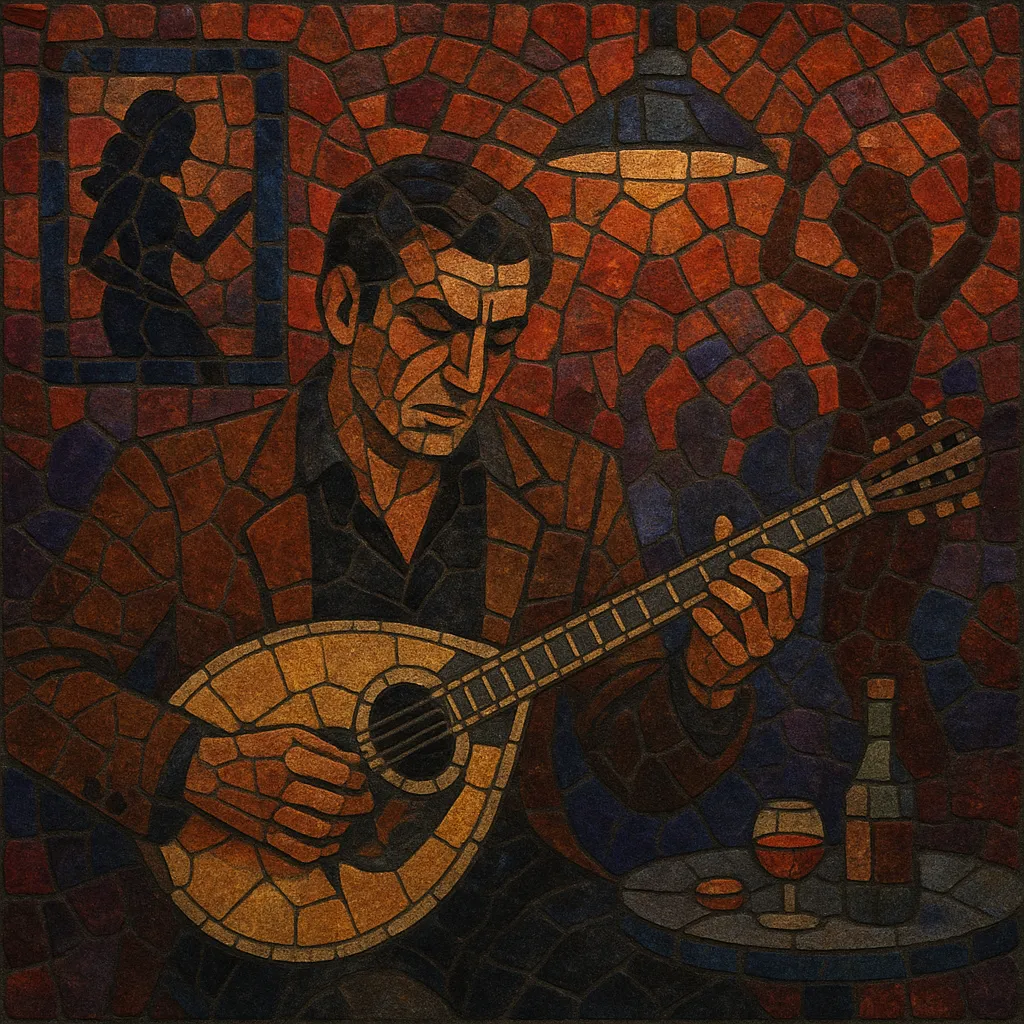Skiladiko (Greek: "σκυλάδικο") is a colloquial, often pejorative label for a branch of modern laïko/pop-folk associated with Greece’s late‑night club circuit. It blends amplified bouzouki riffs and ornamented vocals with electric guitars, synthesizers, and drum machines, producing a high‑energy, melodramatic sound aimed at dance floors and all‑night venues.
The style emphasizes direct, emotionally charged lyrics about love, heartbreak, nightlife, jealousy, and excess. Arrangements typically feature minor‑key ballads (zeibekiko feel), 4/4 belly‑dance grooves (tsifteteli), and brisk hasapiko/hasaposerviko numbers, often punctuated by key‑change lifts and virtuosic bouzouki solos. Though the term can be dismissive, it points to a real nightlife tradition where crowd participation, flower‑throwing, and marathon sets are central to the experience.
Skiladiko emerged in Greece’s club culture during the 1980s, when modern laïko absorbed electric instrumentation, synthesizers, and recorded‑music aesthetics from global pop. The term itself is tied to the late‑night “skyládika” venues on city outskirts and highways, where very loud, highly amplified laïko/pop‑folk was played until dawn.
By the late 1980s and throughout the 1990s, skiladiko crystalized as a recognizable sound and scene. Bouzouki took a lead‑guitar role over drum machines and glossy keyboard pads, while singers delivered melismatic, dramatic lines about love and loss. Clubs cultivated rituals—flower‑throwing, call‑and‑response, extended taximi (improvised) intros—and programmed sets that moved between zeibekiko ballads, tsifteteli dance numbers, and up‑tempo hasapiko tracks.
From the 2000s onward, skiladiko aesthetics blended even more with mainstream Greek pop and international club production (compressed drums, brighter synths, key‑lift choruses). While some artists and critics reject the label due to its pejorative tint, the style’s sonic markers—amplified bouzouki, dance‑ready grooves, and emotive vocals—remain staples of Greek nightlife and continue to shape popular laïko.
The term “skiladiko” can be used dismissively to suggest formulaic or overly commercial music. Yet, beyond the label’s baggage, it reflects a living performance culture centered on audience interaction and catharsis. Its clubs and practices are integral to how many Greeks experience contemporary laïko and dance‑oriented urban folk.


